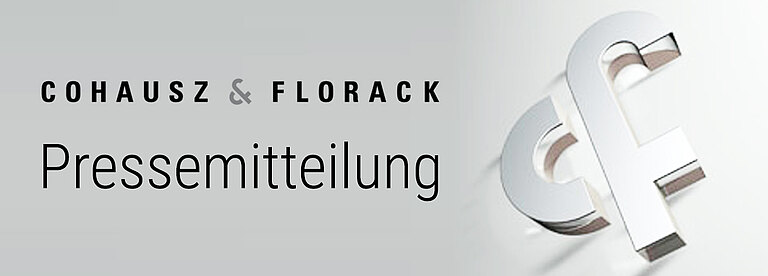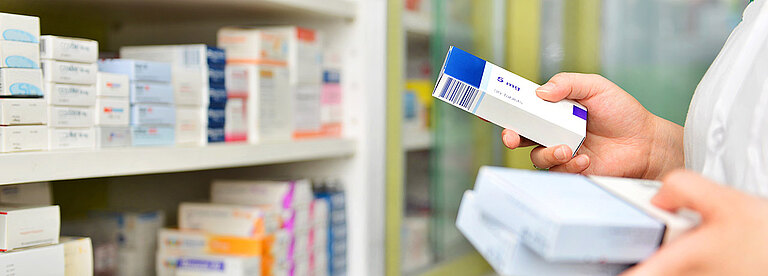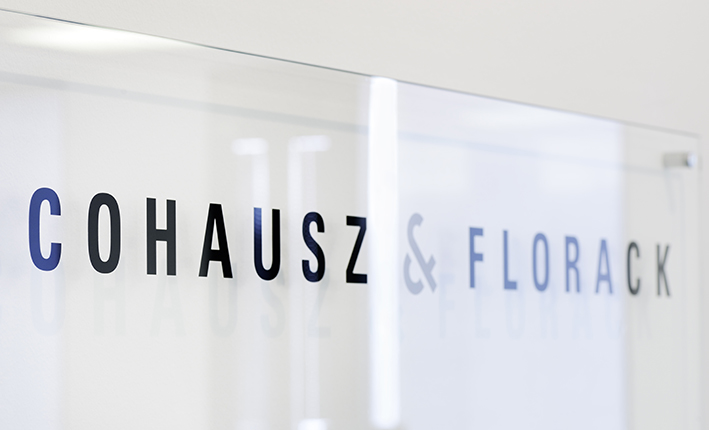A patent application should be filed as soon as possible due to the first-to-file principle and the risk of published prior art rendering the invention non-patentable. However, at the same time, experimental evidence for the technical effect underlying the invention should be included in the application in order to overcome the EPO’s plausibility hurdle and to ensure that an inventive step is acknowledged.
The recent EPO Board of Appeal decision in *Sprycel* (T488/16) has warned the life sciences sector of the risk associated with filing too early or not including experimental evidence for other reasons. The patent in this case contained compound claims to the commercially successful anti-cancer drug dasatinib (Sprycel®), a tyrosine kinase inhibitor with an annual turnover of more than $1 billion. The specification disclosed hundreds of exemplified and characterised chemical compounds, one of which was dasatinib. While the specification described several assays as suitable for the assessment of the protein kinase inhibitory activity and contained a very general summary statement that “compounds described in the following examples have been tested in one or more of these assays, and have shown activity”, it provided no activity data in respect of any of the compounds. Since the application as filed did not render a technical effect plausible, the Board of Appeal did not accept any of the post-published experimental evidence submitted by the patent owner during the opposition proceedings. The decision of the Opposition Division to revoke the corresponding patent based on a lack of inventive step was thus upheld by the Board of Appeal.
In order to overcome the plausibility threshold defined in *Sprycel*, in general applicants should include in the application as much experimental data as possible, or at least a detailed description of experimental methods to determine the technical effect underlying the claimed invention. The ideal timing for filing a patent application will vary on a case-by-case basis. In case of compound claims or medical use claims directed at the treatment of a particular disease, *invitro* studies demonstrating the activity of the compound against a molecular target or pathogen implicated in the disease may be sufficient to render the claimed effect plausible. However, some inventions in the pharmaceutical field are made only during clinical trials and clinical trial data may then be necessary for rendering a particularly surprising technical effect plausible. For example, if a particular dosage regimen or formulation unexpectedly turns out to be associated with a special and surprising pharmacodynamic/pharmacokinetic or safety profile.
However, pharmaceutical companies should be careful when filing a patent application after having started with clinical trials on the claimed medical use or compound. While clinical trials are an essential part in the process of developing novel medicaments, they can also constitute prior art for a corresponding patent application if their study objective, be it the dosing scheme or study medication, or the trial results becomes public. In the United States, trial sponsors are in many cases obliged to register details of the clinical trial on ClinicalTrials.gov within 21 days of enrolling the first patient. Summary results must also be published within strict time limits, but there are also other ways by which clinical trial information can become public.
Clinical trials and confidentiality – risk of prior art disclosures
The question of whether clinical trials are considered prior art depends on when and what information has become available to the public. Not only the results of the trial, but the information that a trial of a drug in a particular indication or with a particular dosage regimen is ongoing, can be detrimental prior art for a later-filed patent application. Similarly, study medication that has entered the public domain can constitute prior art against compound, formulation and medical use patent claims. One of the ways in which information on clinical trials can become prior art is through the lack of explicit or implicit confidentiality agreements with trial participants.
Determining if all participants of a trial are bound by an implicit confidentiality agreement can be tricky. According to some Board of Appeal decisions, medical professionals and hospital staff involved in the treatment of patients using a prototype of a medical device are, in general, considered to be obliged to confidentiality (T152/03 and T906/01). In contrast, if a doctor involved in clinical trials encourages trial patients to discuss a treatment with their family and family doctor, the information given to the patients is considered to have become available to the public (T239/16). Trial patients themselves, however, are not members of the public in a strict sense (T598/12). Only when trial patients have sufficient information that they can share with members of the public, is such information considered to have become available to the public.
In the ongoing appeal proceedings in T41/17, the first-instance Opposition Division regarded an implicit confidentiality obligation not to extend to the trial participants in general. In addition, even explicit confidentiality agreements might be void if trial participants need to have the possibility to discuss the treatment with their spouses or doctors. It will be interesting to see whether the Board of Appeal will concur with the reasoning of the Opposition Division. This bears the risk of rendering many explicit confidentiality agreements with trial participants moot.
Pharma companies must factor these IP considerations into their clinical study design. Having all trial participants sign confidentiality agreements might not be sufficient to ensure that information or study medication shared with them does not become prior art. Pharma companies should carefully consider how much and what information they are required to share with trial participants. For example, in T598/12 the study subjects had not been informed about the particular dissolution characteristics of the immediate release form of the administrated drug. Hence, this information had not become available to the public.
However, even if confidentiality agreements with all trial participants are assumed to be in place and valid, clinical trial information can become available to the public in alternative ways.
Clinical trials as public prior use due to take-home tablets
Take-home tablets that are disseminated to trial participants can constitute a public prior use in certain circumstances. This was a relevant factor in the well-known case regarding Bayer’s contraceptive *Yasmin*® (T7/07). Here, only the principal investigators, not the study participants, were under an explicit secrecy agreement. The study participants had been informed about the active ingredient of the contraceptive but not about the fact that it was present in a micronised form in the tablet. The participants were provided with tablets to take home for treatment during the trial and not all unused drugs were returned by the participants at the end of trial. The Board of Appeal was thus of the opinion that a member of the public had the theoretical possibility of accessing the tablets and analysing the content and properties of the tablet. This was sufficient for the Board of Appeal to conclude that the information had become available to the public. Consequently, the patent was revoked on the grounds of lack of novelty.
In the case underlying the ongoing appeal proceedings in T1427/16, participants of the clinical study had been informed that they “will return [the] study drug provided to you at your last visit” and that “the drug was only released to them for the sole purpose of the trial and that it was not to be shared with or used by anyone else”. The Opposition Divison considered this sufficient to assume that the drug had not become publicly available, in particular since an alleged prior use had to be proven “beyond any doubt and not on the balance of probabilities”. It will be interesting to see whether this will be confirmed by the Boards of Appeal of the EPO.
Naturally, such considerations can be avoided if the study participants take the drugs only in the hospital setting. However, such a study design may be impractical and costly. The question of how study designers can ensure that tablets taken at home do not become public prior use thus remains relevant, with no clear solution on the horizon.
Clinical trials as closest prior art for inventive step
Even in cases where neither the results of the clinical trial nor the study medication have become available to the public, the mere publication of the fact that a trial with a particular drug and dosage regimen is ongoing can be detrimental to the patentability of a corresponding patent.
In T239/16, the patent was directed towards a particular dosage regimen (once-yearly administration) of Zoledronic acid or a pharmaceutically acceptable salt thereof for the treatment of osteoporosis. A document that was handed out to trial participants that described five different dosage regimens, which involved three-monthly but also once-yearly administration. As the document neither provided an explicit nor an implicit disclosure of the trial results (ie, effective treatment of osteoporosis with once-yearly administration of Zoledronic acid), the Board of Appeal acknowledged novelty of the claimed medical treatment and dosage regimen. However, when considering inventive step, the Board of Appeal was of the opinion that the mere fact that a particular dosage regimen and active agent was being tested in clinical trials involving patients suffering from osteoporosis, provided the skilled person with a reasonable expectation of success, that such a treatment may likely be effective. Clinical study design was known to be based on pre-clinical testing and to require authority approval, which takes ethical considerations into account. Hence, the skilled person would have expected all study arms to treat osteoporosis effectively, unless they were dissuaded from this by the prior art. The patent was thus revoked due to lack of inventive step.
US discovery providing information on clinical trials for European patent cases
For third parties it is often difficult to get a hold of documents that prove a clinical trial-related public prior use or the lack of secrecy agreements. This can change when a parallel US litigation is ongoing.
In T7/07, an opponent had inferred the information regarding the clinical trial from the corresponding US District Court decision. Through the US system of pre-trial discovery, information otherwise hard to obtain in European patent opposition proceedings can be identified and accessed by competitors. Patentees should also be aware that Section 1782 of the US Code allows opponents to apply to a US court to obtain evidence for use in EPO opposition proceedings through US discovery, although these requests are not necessarily granted (eg, *In re Schlich* (1st Cir 2018)).
Recommendations for avoiding clinical trials becoming an obstacle to patentability in Europe
Clinical trials can pose a risk to European patent protection in multiple ways. A big challenge is the significant uncertainty and unpredictability in the case law on clinical trials becoming prior art. For example, it remains unclear whether confidentiality agreements with study patients will be considered required or void and under which circumstances studies involving the taking home of tablets by patients can be prevented from becoming public prior use. Pharmaceutical companies planning clinical trials and related patent filings can reduce the risk of clinical trials becoming prior art by considering the following measures:
- Filing a European patent application before starting clinical trials if possible – this is the simplest and safest way of ensuring that clinical trials will not become an obstacle to patent protection. In many cases, pre-clinical or *invitro* results included in the application are considered sufficient to render a technical effect plausible for inventive step purposes in European patent examination and opposition proceedings.
- Signing confidentiality agreements with all people involved in the clinical trial, including study participants – although it is unclear whether such confidentiality agreements will always be considered valid, it is a precautionary measure that should nevertheless be taken. Allowing patients to discuss the treatment with their own doctor should, in principle, not render the information available to the public due to the inherent confidentiality of the doctor-patient-relationship.
- Conducting all relevant aspects of the trial in a closed-off and/or controllable setting (eg, in an onsite facility or hospital) – if at all possible, clinical trials should avoid having the patients take the study medication home or at least explicitly request all unused study medication be returned. Otherwise it is difficult to ensure that no member of the public has the theoretical possibility of accessing (unused) study medication.
- Carefully selecting and controlling the information patients receive before and during the trial – while patients clearly need transparency regarding the trial setup and the treatment that they are receiving, it might, for example, be unnecessary to inform them of all details and particularities of the study drug formulation.
Some of these measures that are highly recommended from an IP perspective might be difficult to implement for organisational or regulatory reasons in some countries. In such cases, close coordination between the regulatory department, in-house patent attorneys and outside counsel will be key.
Outlook
Whether clinical trial information becomes relevant prior art for related patent applications is a question that must be determined on a case-by-case basis. Unfortunately, the predictability of future cases is low since EPO case law is still maturing in this area. While early case law applied a rather broad understanding of confidentiality in clinical studies, the picture has become gloomier for innovator companies and patent owners since T7/07. It may not be possible to bind trial participants to confidentiality agreements (T41/17); opponents may be able to access trial information through US discovery (T7/07); tablets taken home by patients might *per se* constitute prior use (T2250/13) and even if the publicly available information on the clinical studies might not give any direct indication of any efficacy for a substance, a patent might be revoked due to lack of inventive step in light of the mere announcement of a clinical trial for a particular dosage regimen (T239/16).
Getting the timing of patent filings right in the pre-clinical and clinical development pipeline remains a critical and difficult decision to make. If at all possible, the patent filing should occur before the onset of clinical trials and may be best even before any details on planned clinical trials become available to the public.
This article first appeared in IAM Life Sciences: Key issues for senior life sciences executives 2019, a supplement to IAM, published by Globe Business Media Group - IP Division. To view the guide in full, please go to www.IAM-media.com.
Header: Anchalee - AdobeStock





